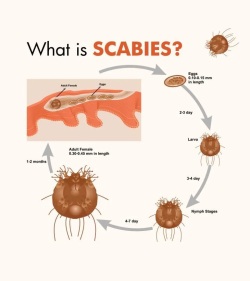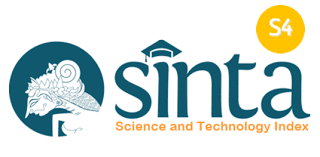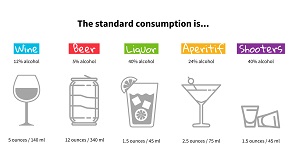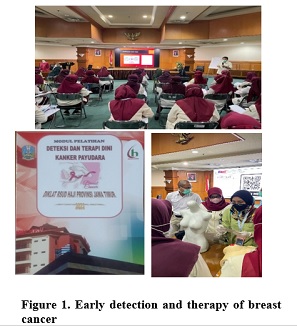Risk Factors, Level of Knowledge, and Scabies Transmission Prevention Behavior Among Students at the Ar-Rahmah Islamic Boarding School, Golokan, Sidayu, Gresik, Indonesia

Scabies is an infectious skin disease caused by the parasite Sarcoptes scabiei var. hominis and its products. Although the prevalence has decreased, scabies remains a public health problem in Indonesia. In the Sidayu District of Gresik, there has been an increase in scabies cases, particularly in densely populated communities such as Islamic boarding schools. Factors contributing to the high incidence of scabies are related to poverty, resulting in low levels of personal hygiene, limited access to water, and high population density. This study aims to determine the risk factors, level of knowledge, and scabies transmission prevention behavior among students at the Ar-Rahmah Islamic boarding school, Golokan Village, Sidayu District, Gresik, Indonesia in 2024. This research is a descriptive study, with data collected using a questionnaire. The sample comprises 88 respondents, selected through non-probability purposive sampling. Results showed that all respondents were male, 40.9% were 14 years old, 35.2% were in grade 8, and 34.1% had lived in an Islamic boarding school for 1-2 years. Additionally, all respondents had a level of housing density not meeting health standards, 79.5% had experienced scabies symptoms, and 56.8% had suffered from scabies. Furthermore, 55.7% of respondents demonstrated good knowledge about scabies, while 85.2% exhibited poor behavior in preventing scabies transmission, with 63.6% showing negative results when screened for scabies via questionnaire. Overall, most students exhibit high-risk factors for scabies, possess a good level of knowledge about the disease, yet demonstrate poor preventive behaviors against its transmission.
INTRODUCTION
Scabies is an infectious skin disease caused by infestation of the parasiteSarcoptes scabiei var. hominisand its products.Sarcoptes scabieisurvives in the human body by making tunnels in the skin, causing itching symptoms in sufferers. Scabies transmission can occur quickly if there is direct physical contact between individuals. Apart from chronic itching, scabies causes significant social impacts. The discomfort caused by itching has direct consequences, namely disrupting the patient's sleep, disrupting concentration at work or school, and harming attendance, performance, and quality of life.
The estimated prevalence of scabies worldwide is 300 million individuals infected each year. It is a significant health problem in many developing countries and was declared a neglected skin disease by the World Health Organization in 200911. Factors contributing to the high incidence of scabies in developing countries are poverty, which is related to low levels of personal hygiene, difficult access to water, and population density22.
The incidence of scabies was found to be high in communities with dense environments and potential risk factors for scabies transmission, such as in prisons, military camps, and boarding schools33. Islamic boarding schools are one of the environments with a high incidence and prevalence of scabies in Indonesia. It is not surprising that students are always associated with this disease, as it is no secret that they live in one local with a makeshift and straightforward environment, making them very vulnerable to diseases, especially skin diseases like scabies44.
Frequently exchanging or borrowing clothes, towels, sarongs, pillows, bolsters, and others, combined with a lazy attitude towards cleanliness, become some factors that accelerate the transmission of diseases. Knowledge and awareness are needed to anticipate this disease so that society does not develop it into a stereotype and that students do not underestimate it. This prompted the author to research the risk factors, level of knowledge, and scabies transmission prevention behavior among students at the Ar-Rahmah Islamic Boarding School, Golokan Village, Sidayu District, Gresik, Indonesia.
METHODS
This was quantitative descriptive research with a cross-sectional design. Data was collected using a questionnaire that previous researchers had validated. The questionnaire consists of respondent characteristics, including gender, age, class, and length of stay at the Islamic boarding school. The variables measured were occupancy density, history of scabies, history of scabies symptoms, level of knowledge regarding scabies, and behavior to prevent transmission of scabies.
The population was all students at the Ar-Rahmah Islamic Boarding School, Golokan Village, Sidayu District, Gresik, Indonesia, with a total sampling technique of 88 students. Researchers collected data by gathering all respondents in the hall, explaining the research objectives, and asking for their willingness to act as respondents. Respondents filled out the questionnaire in writing.
Data analysis was carried out descriptively using Microsoft Excel, with a frequency distribution table measuring the percentage of each variable. Conclusions are drawn based on the mode of each variable. This research received ethical permission from the health research ethics committee, Faculty of Medicine, Universitas Airlangga, with approval number 56/EC/KEPK/FKUA/2024, dated February 26, 2024, granted by Dr. Soebagjo Adi Soelistijo, dr., Sp.PD., K-EMD., FINASIM., FACP.
RESULTS
88 male students from Ar-Rahmah Islamic Boarding School, Golokan Village, Sidayu District, Gresik, Indonesia, participated in this study. The demographic characteristics, risk factors, level of knowledge, and scabies transmission prevention behavior were analyzed descriptively. The students’ ages ranged from 12 to 17 years, with the majority being 14 (40.9%). Most students were in class 8 (35.2%). The length of stay in the boarding school varied, with most students (34.1%) staying for one or two years. All students (100%) lived in an environment that did not meet standard occupancy density, which may contribute to scabies transmission. 56.8% of students reported a history of scabies, while 79.5% had experienced scabies symptoms. These findings indicate a high prevalence of scabies-related issues in the boarding school environment.
Knowledge assessment showed that 55.7% of students had good knowledge about scabies, while 44.3% had bad knowledge. Despite more than half demonstrating a sufficient understanding, a significant proportion with inadequate awareness remains, which may contribute to improper prevention behaviors. Preventive behaviors among students were destructive, with only 14.8% exhibiting good scabies transmission prevention behavior, while 85.2% had bad prevention practices. This highlights the need for more effective health education and behavioral interventions. Only 36.4% of students reported undergoing scabies screening, while 63.6% had never been screened. This indicates a lack of routine monitoring, which may hinder early detection and management of scabies cases. Despite most students (55.7%) having good knowledge of scabies, this did not translate into good prevention behavior, as only 14.8% actively engaged in preventive measures. This suggests that awareness alone is insufficient, and additional efforts are required to reinforce behavioral changes.
Characteristics | Frequency (n = 88) | Percentage (%) |
Gender | ||
Male | 88 | 100 |
Female | 0 | 0 |
Age | ||
12 y/o | 5 | 5.7 |
13 y/o | 17 | 19.3 |
14 y/o | 36 | 40.9 |
15 y/o | 20 | 22.7 |
16 y/o | 7 | 8.0 |
17 y/o | 3 | 3.4 |
Class | ||
7 | 24 | 27.3 |
8 | 31 | 35.2 |
9 | 23 | 26.1 |
10 | 10 | 11.4 |
Length of Stay in Boarding School | ||
1 year | 30 | 34.1 |
2 year | 30 | 34.1 |
3 year | 21 | 23.9 |
4 year | 7 | 8 |
Occupancy Density | ||
According to the standard | 0 | 0 |
Not according to standard | 88 | 100 |
History of Scabies | ||
Yes | 50 | 56.8 |
No | 38 | 43.2 |
History of Scabies Symptoms | ||
Yes | 70 | 79.5 |
No | 18 | 20.5 |
Level of Knowledge | ||
Murray, R.L. (2023) Scabies, StatPearls [Internet]. Available at: https://www.ncbi.nlm.nih.gov/books/NBK544306/ (Accessed: 14 April 2024).
Zara, N. (2021). Relationship of Education, Knowledge and Behavior of Society and Scabies in Syamtalira Bayu Health Center Northern Aceh Regency. Natural Sciences Engineering and Technology Journal, 2(1), pp.65–73. doi:https://doi.org/10.37275/nasetjournal.v2i1.13.
El-Moamly, A.A. (2021) ‘Scabies as a part of the World Health Organization Roadmap for Neglected Tropical Diseases 2021–2030: What we know and what we need to do for global control’, Tropical Medicine and Health, 49(1). DOI: 10.1186/s41182-021-00348-6
Wahyu, K., & Khadijah, S. (2023). Stigma Skabies pada Santri: Studi Fenomenologi [The Stigma of Scabies among Islamic Boarding School Students: A Phenomenological Study]. Jurnal Ilmu Kesehatan Dharmas Indonesia, 3(2), 35–43. DOI : 10.56667/jikdi.v3i2.1227
Ministry of Health, Republic of Indonesia. Keputusan Menteri Kesehatan Republik Indonesia [Decree of the Minister of Health, Republic of Indonesia]. 1999. No.829/Menkes/SK/VII/1999 tentang Persyaratan Kesehatan Perumahan. Jakarta.
Dotulong, J., Sapulete, M.R., Kandou, G.D., 2015. Hubungan Faktor Risiko Umur, Jenis Kelamin Dan Kepadatan Hunian Dengan Kejadian Penyakit Tb Paru Di Desa Wori Kecamatan Wori [Association of Age, Gender, and Housing Density with the Incidence of Pulmonary Tuberculosis in Wori Village, Wori Subdistrict]. J. Kedokt. KOMUNITAS DAN Trop. 3. https://ejournal.unsrat.ac.id/v2/index.php/JKKT/article/view/7773
Gumilang, R. and Farakhin, N. (2021) ‘Hubungan Personal Hygiene dengan Kejadian Penyakit Skabies pada Santri di Pondok Pesantren Al-Hikam Bangkalan’ [The Relation of Personal Hygiene with the Incidence of Scabies at Al Hikam Boarding School Students Bangkalan in the Year 2021], Jsk, 6(2), pp. 80–84. https://jurnal.unpad.ac.id/jsk_ikm/article/view/48527.
Romani, L., Steer, A.C., Whitfeld, M.J. and Kaldor, J.M. (2015). Prevalence of scabies and impetigo worldwide: a systematic review. The Lancet Infectious Diseases, 15(8), pp.960–967. DOI : 10.1016/s1473-3099(15)00132-2.
GUPTA, S., Thornley, S., Morris, A., Gerhard Sundborn and Grant, C. (2024). Prevalence and determinants of scabies: a global systematic review and meta-analysis. medRxiv (Cold Spring Harbor Laboratory). doi:https://doi.org/10.1101/2024.05.06.24306963.
Amare Mebrat Delie, Eyob Ketema Bogale, Tadele Fentabel Anagaw, Misganaw Guadie Tiruneh, Eneyew Talie Fenta, Ousman Adal and Kebede, N. (2024). Global prevalence and predictors of scabies among prisoners: systematic review and meta-analysis. BMC Public Health, [online] 24(1). doi:https://doi.org/10.1186/s12889-024-19401-0.
Septiana Widyantari, Dinda Rozita Maharani and Muhammad, N. (2023). Profile of Scabies in Surabaya Boarding School. Berkala Ilmu Kesehatan Kulit dan Kelamin, 35(3), pp.199–202. doi:https://doi.org/10.20473/bikk.v35.3.2023.199-202.
CDC (2024). Symptoms of Scabies. [online] Parasites - Scabies. Available at: https://www.cdc.gov/scabies/signs-symptoms/index.html.
Kurniawan, M. and Ling, M.S.S., 2020. Diagnosis dan Terapi Skabies [Diagnosis and Treatment of Scabies]. Cermin Dunia Kedokteran, 47(2), pp.104-107. https://www.neliti.com/publications/401271/diagnosis-dan-terapi-skabies
Ramadhan, P., Pristiana Dewi, A. and Keperawatan, F. (2019) ‘Gambaran Pengetahuan Dan Sikap Santri Tentang Scabies Di Pondok Pesantren Kota Pekanbaru’ [Knowledge and Attitudes of Santri Regarding Scabies at an Islamic Boarding School in Pekanbaru City], JOM FKp, 6(1), pp. 354–362. http://digilib.unri.ac.id/?p=show_detail&id=95413
Hidayat, U. A., Hidayat, A. A. and Bahtiar, Y. (2022) ‘Hubungan Tingkat Pengetahuan Tentang Scabies dengan Kejadian Penyakit Scabies pada Santri Manbaul Ulum’ [Association between Knowledge Level about Scabies and the Incidence of Scabies among Santri at Manbaul Ulum Islamic Boarding School], Jurnal Keperawatan Galuh, 4(2), p. 33. DOI: 10.25157/jkg.v4i2.7817
Sanei-Dehkordi, A., Soleimani-Ahmadi, M., Zare, M. and Jaberhashemi, S.A. (2021). Risk factors associated with scabies infestation among primary schoolchildren in a low socio-economic area in southeast of Iran. BMC pediatrics, [online] 21(1), p.249. doi:https://doi.org/10.1186/s12887-021-02721-0.
Dagne, H., Dessie, A., Destaw, B., Yallew, W.W. and Gizaw, Z. (2019). Prevalence and associated factors of scabies among schoolchildren in Dabat district, northwest Ethiopia, 2018. Environmental Health and Preventive Medicine, 24(1). doi:https://doi.org/10.1186/s12199-019-0824-6.
Haile, T., Sisay, T. dan Jemere, T. (2020) ‘Scabies and its associated factors among under 15 year´s children in Wadila District, Northern Ethiopia, 2019’, Pan African Medical Journal, 37. DOI: 10.11604/pamj.2020.37.224.25753.
Misganaw, B. (2022) ‘Prevalence and determinants of scabies among school-age children in Central Armachiho District, Northwest, Ethiopia’, PLOS ONE, 17(6). DOI: 10.1371/journal.pone.0269918.
Yulfi, H., Zulkhair, M. dan Yosi, A. (2022) ‘Scabies infection among boarding school students in Medan, Indonesia: Epidemiology, risk factors, and recommended prevention’, Tropical Parasitology, 12(1), p. 34. DOI: 10.4103/tp.tp_57_21
Copyright (c) 2025 Rizaldy Ramadhan, Ghulam Ramadhiansyah, Shafa Garneta Kintani Putri, Fatimah Azizah Salsabila, Valensia Arita Putri, Fadhilah Jilan Shabirah, Malikulsaleh, Hanan Alya Farhana, Cahya Ayu Pratiwi, Andriani Dwi Hefrida, Lilik Djuari

This work is licensed under a Creative Commons Attribution-ShareAlike 4.0 International License.
- The journal allows the author to hold the copyright of the article without restrictions.
- The journal allows the author(s) to retain publishing rights without restrictions.
- The legal formal aspect of journal publication accessibility refers to Creative Commons Attribution Share-Alike (CC BY-SA).
- The Creative Commons Attribution Share-Alike (CC BY-SA) license allows re-distribution and re-use of a licensed work on the conditions that the creator is appropriately credited and that any derivative work is made available under "the same, similar or a compatible license”. Other than the conditions mentioned above, the editorial board is not responsible for copyright violation.































